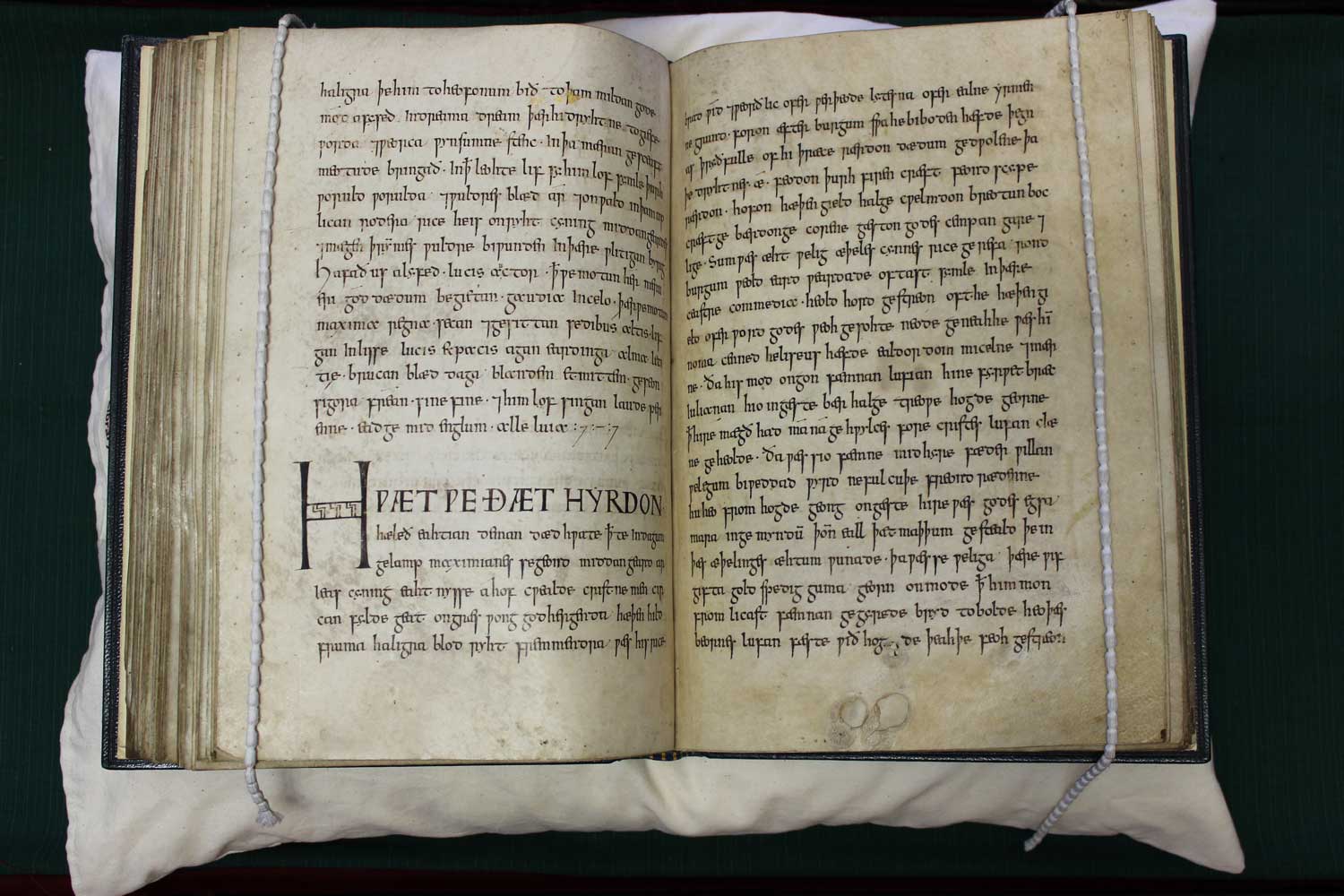 |
| The Exeter Book |
Physical material objects are some of the most important historical and literary artifacts that we can possess. These artifacts can range from pottery, weaponry, jewelry, etc. Probably the most important kind of material artifact is the book. The reason for this is because books contain the knowledge of the civilizations that came before us. Even if the works in question are purely fictional stories, these stories can contain evidence of what these past cultures believed in. Another contributing factor to the importance of books is their fragility. Works that date back hundreds of years often become worn with age and thus their legibility is constantly fading away. For example, the United States Declaration of Independence which was written in the 18th century has to be kept in a special case with very specific lighting simply to prevent it from fading away. Now imagine a work from the 10th century written in a language that is considered to be the precursor to Present Day English. That is the Exeter Book, a vast collection of poetry from the Anglo-Saxon period written entirely in Old English.
Some of the culturally significant material found within the Exeter Book are the riddles it contains. The riddles are written in an Anglo-Saxon form of poetry ranging from a variety of different topics from battle, life, and religion. Riddles 25, 26, and 47 highlight all contain examples of book and its significance. Riddle 25 also incorporates religion into its theme by centering around the Bible.
The Exeter Book serves a dual purpose as both a historical artifact and a literary artifact. While the Exeter Book is primarily a literary work, it is also a historical artifact due to the information found within. The fact that the text is written entirely in Old English only adds to its value to both the historical and literary world and thus represents a perfect example as to why materiality matters to historians and literary scholars. Being able to study the Exeter Book also helps to research into other civilizations like the Normans. Medievalists in particular will find true value within the Exeter Book because of its importance in understanding the Medieval World.
While not every riddle found within the Exeter Book deals with religion and the text itself isn’t primarily a religious work, it can still offer valuable insight into how religion was viewed during the 10th century. Connections can be made between the Exeter Book and religious texts that were written during the Anglo-Saxon period. The Exeter Book itself has ties to the Benedictine Revival of the 10th century and thus can be viewed as central to studying religious themes as well. As a matter of fact, the Exeter Book can also be used to help understand the Christian Bible. Both are physical books that existed during the Middle Ages and both are materials artifacts with links to the historical and literary worlds.
Overall, The Exeter Book and the riddles and poetry within it, provide us with a link to the historical and literary world of the Anglo-Saxon period of the Middle Ages. It highlights the importance of the book as a material artifact and the importance of material artifacts themselves. The knowledge it contains on culture and society cement it as one of the most important works of the 10th century.
No comments:
Post a Comment